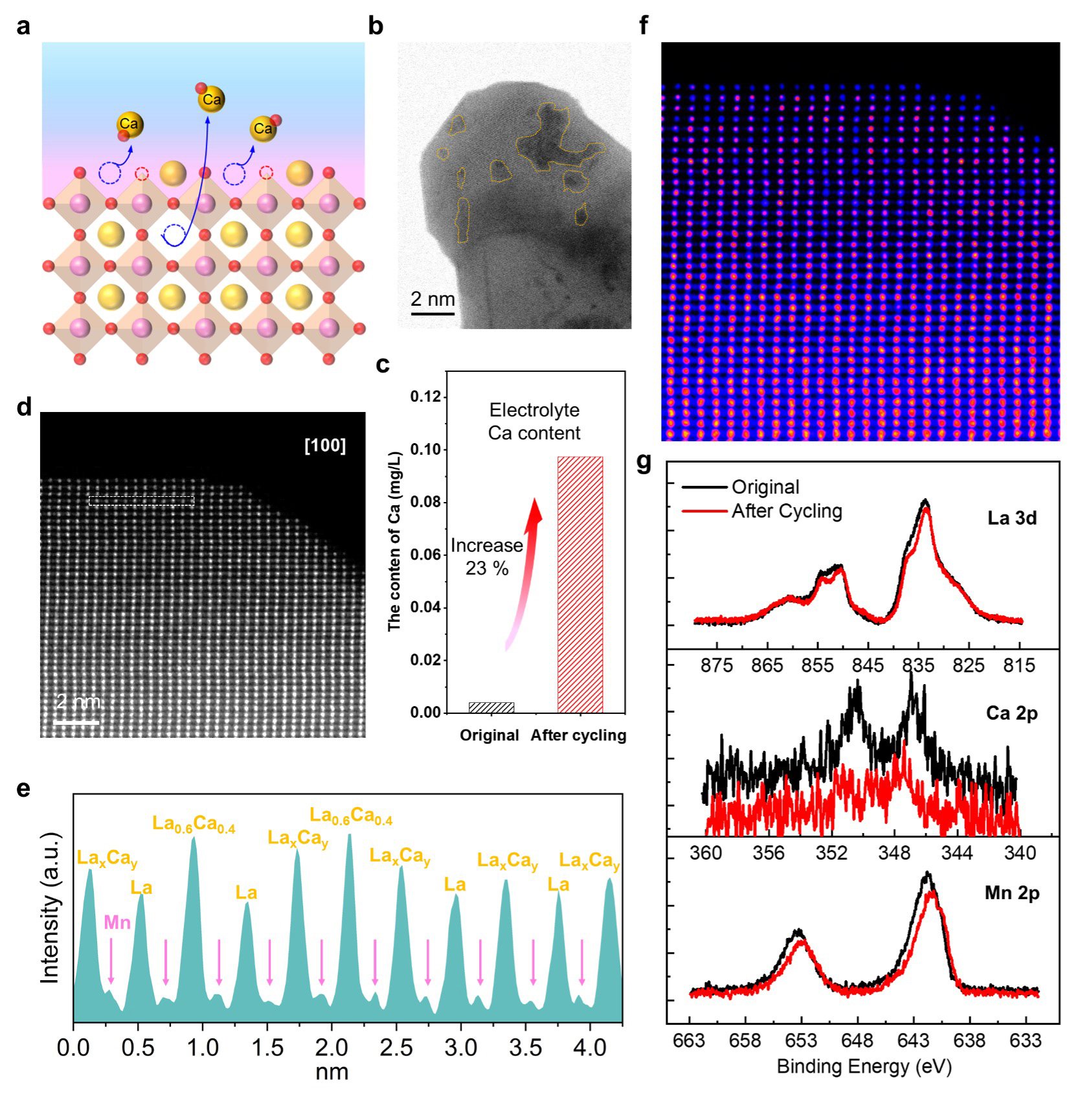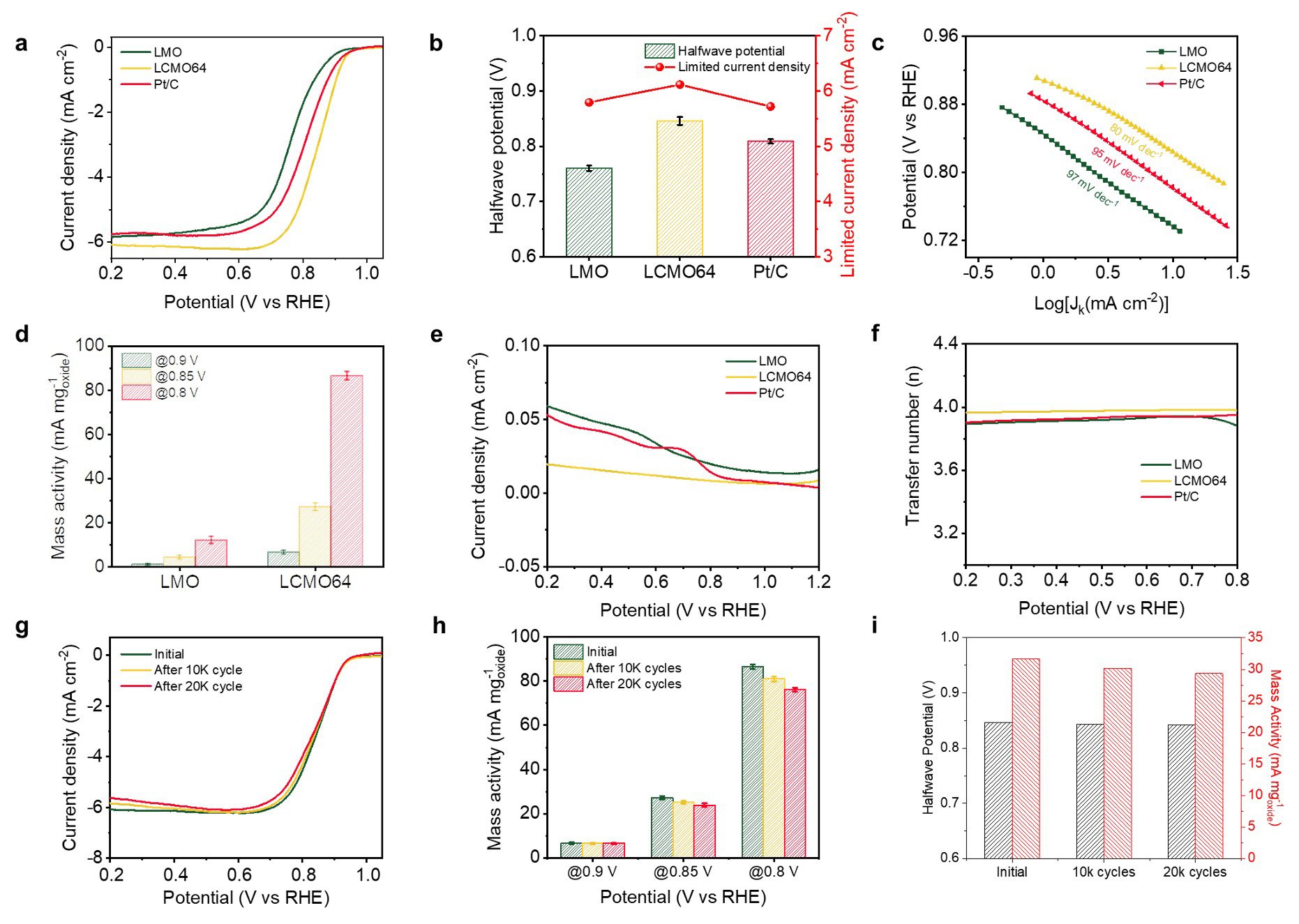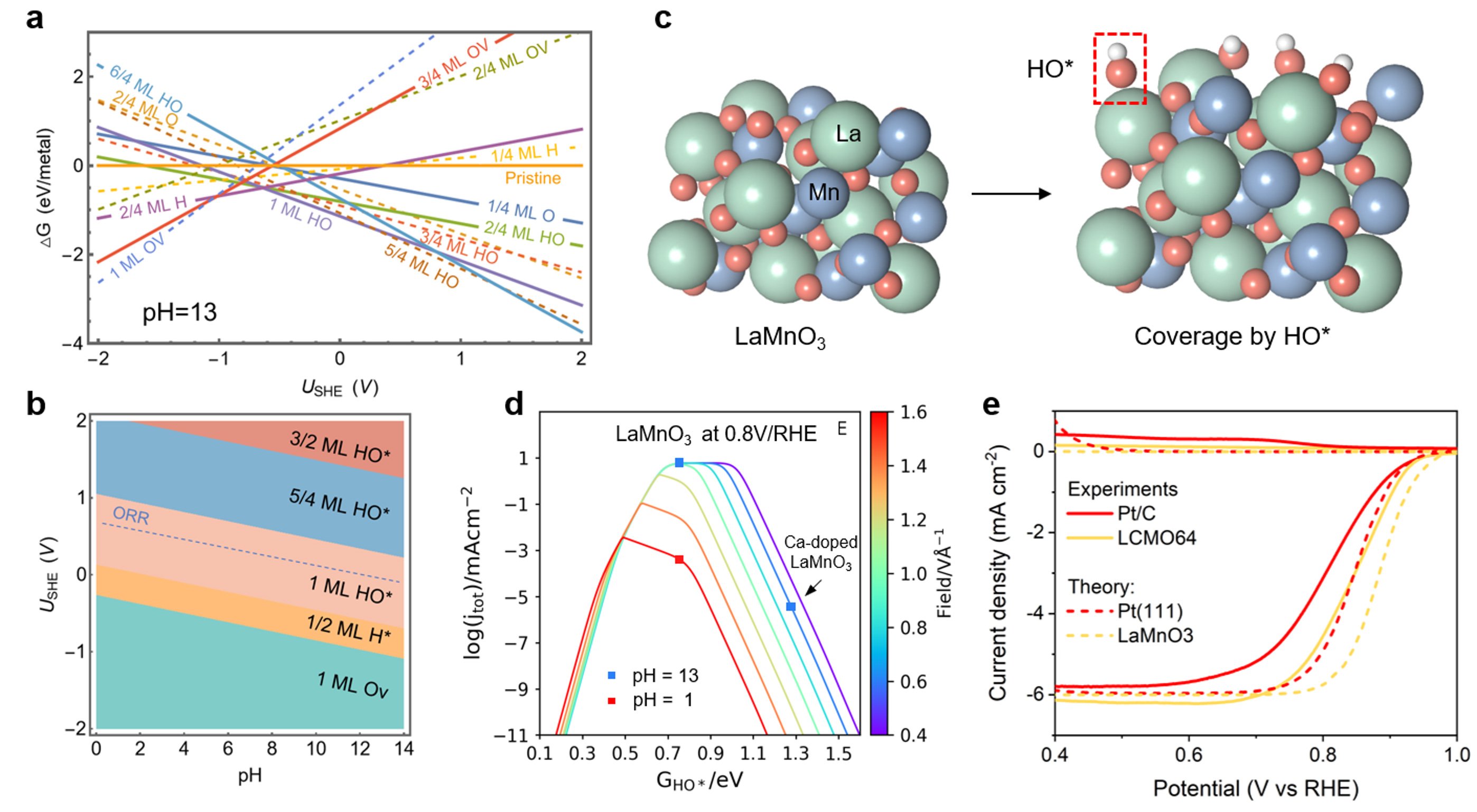A research group has reported on a new method to enhance the electrochemical surface area (ECSA) in a calcium-doped perovskite, La0.6Ca0.4MnO3 (LCMO64), thereby overcoming a common bottleneck in the application of perovskite oxides as electrocatalysts in hydrogen fuel cells.
Details of the findings were reported in the journal Advanced Materials on November 29, 2023.
Perovskite oxides exhibit interesting and diverse properties, making them valuable in various technological applications. Their high intrinsic activities also position them as a promising alternative to noble metal catalysts for efficiently catalyzing the oxygen reduction reaction (ORR). However, their application is still hampered by their poor electrical conductivity and low specific surface area.
“Our electrochemically induced calcium-leaching process greatly increased ECSA in LCMO64,” points out Hao Li, Associate Professor at Tohoku University’s Advanced Institute for Materials Research (WPI-AIMR) and corresponding author of the paper. “The activated, calcium-deficient LCMO64 demonstrated an ECSA approximately 33.84% higher than that of unactivated materials, showcasing superior electrocatalytic ORR performance – surpassing the benchmark commercial Pt/C catalyst in an alkaline solution.”

To test the benchmarks of the material, Li and his colleagues conducted theoretical analysis along with electrochemical surface state probing and pH-dependent microkinetic modeling. The results suggested that this catalyst reaches the Sabatier optimum of alkaline ORR.

This research marks the first time a strategy involving calcium (Ca) doping has been employed to overcome challenges associated with low conductivity and surface area in perovskite oxides. The unique phenomenon of Ca leaching observed under ORR conditions results in a higher surface roughness, significantly expanding the available surface area for ORR and thereby boosting the catalyst’s performance.
“Finding low-cost and effective electrocatalysts for the ORR in hydrogen fuel cells has been a significant challenge,” adds Li. “Our work not only addresses this challenge but also offers a novel strategy for enhancing the electrocatalytic performance of perovskite oxides. This breakthrough has far-reaching implications for the widespread adoption of hydrogen fuel cell technology.”

- Publication Details:
Title: Cation-Deficient Perovskites Greatly Enhance the Electrocatalytic Activity for Oxygen Reduction Reaction
Authors: Qun Li, Di Zhang, Jiabin Wu, Simin Dai, Heng Liu, Min Lu, Renwen Cui, Wenxi Liang, Dingsheng Wang, Pinxian Xi, Meilin Liu, Hao Li, Liang Huang
Journal: Advanced Materials
DOI:








